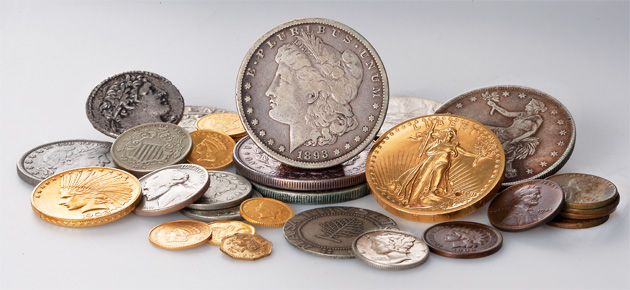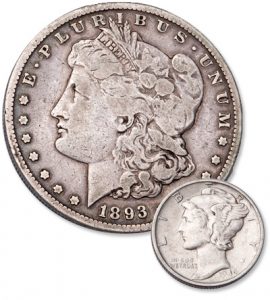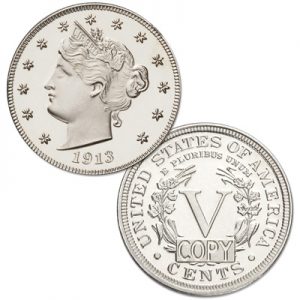They’re out there… here are
5 Ways You Can Avoid Falling Victim to Counterfeit Coins

Littleton’s experts have pulled these counterfeits from the market forever.
There’s been a lot of buzz lately in the numismatic world about counterfeit coins – especially those coming from China. Counterfeiting is as old as coins themselves. However, the biggest problem with these newer fraudulent coins is that better technology makes them harder to detect – since they appear more like genuine pieces than ever before. But there are ways to protect yourself against these scams…
- Be aware of the traditional size (diameter, thickness and weight) of the coins you’re buying. Weigh each coin and check the diameters – if a counterfeiter has used a different metal than the original, the fake version will be off-weight or off-size. If you find that the numbers do match up, still check each coin’s thickness with a caliper – if it isn’t genuine, the diameter and weight may match original specifications, but the width might not.
-

Many counterfeit coins are well crafted, making them hard to detect – like the Morgan dollar and Mercury dime shown here!
If you’re buying online… consider avoiding sellers based in China. It may sound like an overly cautious generalization, but about 90% of the counterfeit coins sold on eBay come from Chinese sellers. Plus, there have been a number of reports on fake silver bullion and general counterfeiting issues in trade publications that pinpoint China as a major source of counterfeit coins. For your own peace of mind, it’s safer to avoid these online sellers.
- Know your dealer. When you buy from a reputable dealer, you’ll have peace of mind. For starters, you’ll know that industry professionals are backing the coins you’ve just spent your hard-earned money on. Plus, dealers that are affiliated with top numismatic organizations like the Professional Numismatists Guild and the American Numismatic Association are held accountable for the items they sell to collectors.
- For higher priced or rare pieces, buy certified coins. These third-party services know how to detect a counterfeit coin, so you can feel more secure about your purchase. Just be sure you also verify the certification number on your coins’ holder – this can be done online through either the PCGS or NGC sites. Many professionals, including Littleton, offer coins that have been certified and encapsulated by these services.
- Be wary. Did a coin catch your eye – but something just feels too good to be true? Maybe it’s a rarity at a fantastic price. Or perhaps the photo you’re seeing doesn’t quite match up with the description provided. No matter your reasoning, never buy a coin unless you feel completely confident in it! That’s part of the joy found in collecting – that sense of pride that comes with owning your collection.

1913 Liberty Head Nickel Replica
One last thing… coin designs CAN be copied as replicas – but all have to be clearly stamped with the word COPY per the Hobby Protection Act. Those pieces are works of art in their own right, and you might find that they’re a great way to round out your collection.
Do you have any counterfeit detection tips that aren’t listed above? Let us know in the comments section – we’d love to hear from you!




A magnet will also make quick work of detecting bad counterfeit silver coins. But be warned that the better counterfeit silver coins are non-magnetic so you will have to go by diameter and weight, seems like most counterfeiters cant get the measurements and weight exact, but some get very close. Also be aware that there are counterfeit coins in counterfeit slabs so do check the certification number against the information of the company that slabbed it.
Thanks for your comments Duane and for your excellent suggestion about checking on certified coins! A little research can save you a lot of heartache (and money!) Have a great weekend! -Rick
Just for laughs, I have a 1901 Morgan dollar that is magnetic and has a Carson City mint mark. No question that its counterfeit.
Good catch Philip! The counterfeiters are not even trying that hard! The Carson City Mint closed in 1893!